Surface Go is a 10-inch $399 tablet aimed at schools, kids, and enterprise
A new, much more affordable Surface PC aims for consumers, education, and enterprise.
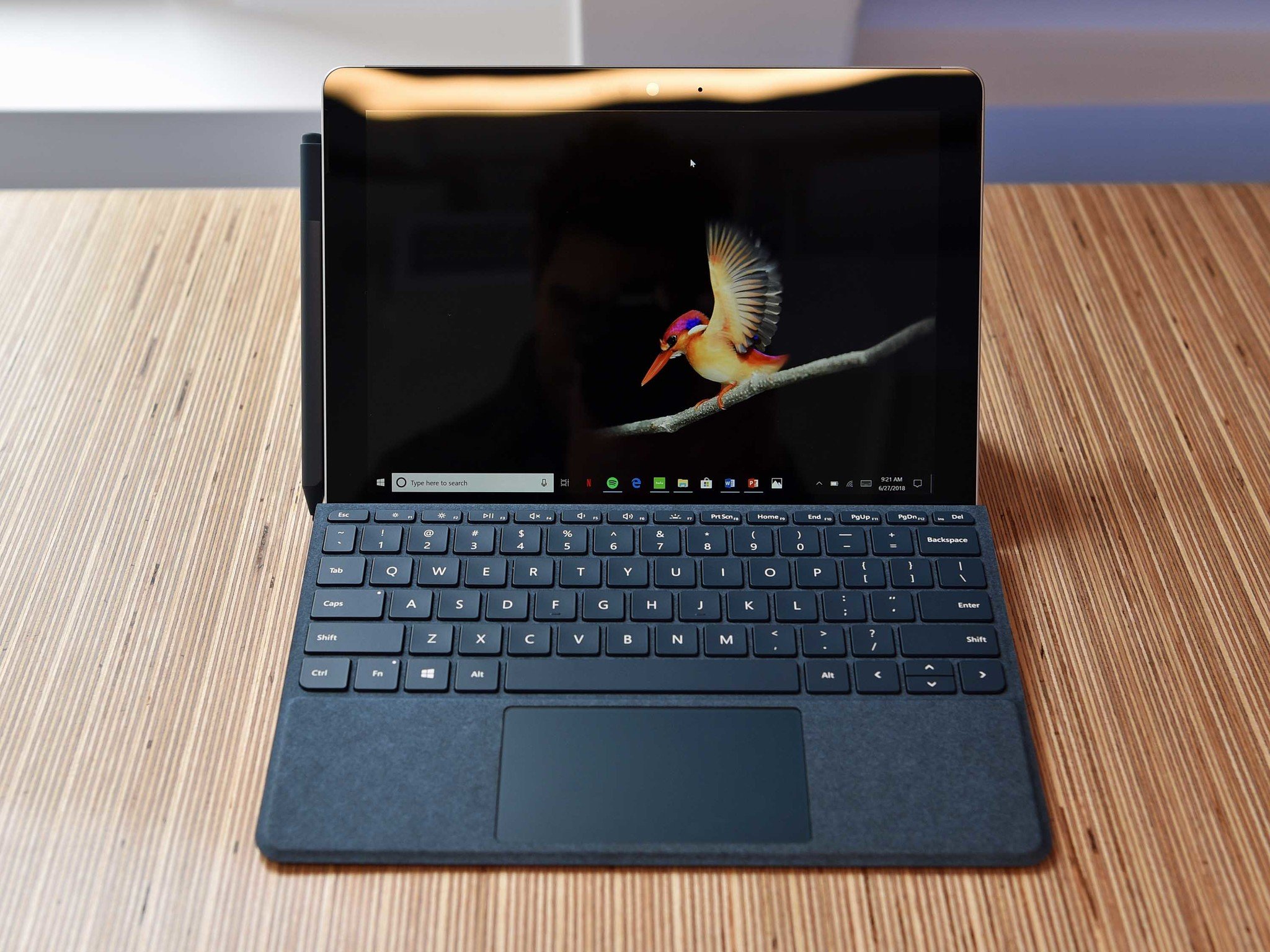
It's been three years since the last non-Pro Surface tablet — the 10.8-inch Surface 3 of 2015. With a $499 price tag, it was one of the most popular Surface tablets for the consumer market, so it makes some sense that Microsoft would revisit the line. It's surprising it took this long.
The new Surface Go, which will be available in early August 2018, features a slightly smaller 10-inch display, but also chops off $100 to bring the starting price to just $399 — aiming right at Apple's budget iPad 9.7.
Combined with an all-new keyboard, a modern Intel Pentium Gold processor, and even USB Type-C, the Surface Go could be Microsoft's most successful Surface model ever. Here is all you need to know about it.
Surface Go design and specifications
Microsoft went back to the drawing board with the Surface Go (an appropriately fun spin on the Pro name) with refreshed hardware and a more modern design that closely mirrors the most prominent features of the more expensive Pro.
| Category | Surface Go |
|---|---|
| OS | Window 10 Home in S-mode |
| Display | 10-inch 3: 2 aspect 1800 x 1200 with touch 216 ppi |
| Processor | Intel Pentium Gold 4415Y (1.6GHz) Fanless |
| Graphics | Intel HD 615 |
| RAM | 4GB or 8GB 1866MHz LPDDR3 |
| Storage | 64GB eMMC 128GB or 256GB SSD |
| Security | TPM 2.0 |
| Ports | 1x USB-C 3.1 (aux. charge, video out, data), microSD (up to 1TB), Surface Connect, headphone jack |
| Surface Pen | 4,096 levels of pressure, tilt support |
| Camera | 5MP front-facing with Windows Hello 8MP rear auto-focus |
| Connectivity | Wi-Fi 802.11 a/b/g/n/ac Bluetooth 4.1 Optional LTE (late 2018) |
| Audio | Dual front-facing speakers Dolby Audio Premium |
| Battery | Up to 9 hours |
| Dimensions | 9.6" x 6.9" x .33" (245mm x 175mm x 8.3mm) |
| Weight | 1.15 lbs (0.52 kg) without keyboard 1.7lbs (0.77 kg) w/keyboard |
| Colors | Magnesium |
| Power | 24 W power supply |
| Price | Starts at $399 Keyboard $99 or $129 (Alcantara) |
The original Surface 3 shipped with a larger 10.8-inch 1920 x 1280 display, while Surface Go is smaller at 10-inch 1800 x 1200. However, the pixel density of the Surface Go is technically a hair higher at 216 ppi, versus the 214 ppi in Surface 3. It's a smaller display, but just as sharp.
A revised keyboard with an all-new connector will also be available for the Surface Go... as a separate purchase. The keyboard has full-sized chiclet style, but the keys are slightly more curved to help users more easily find them.
All the latest news, reviews, and guides for Windows and Xbox diehards.
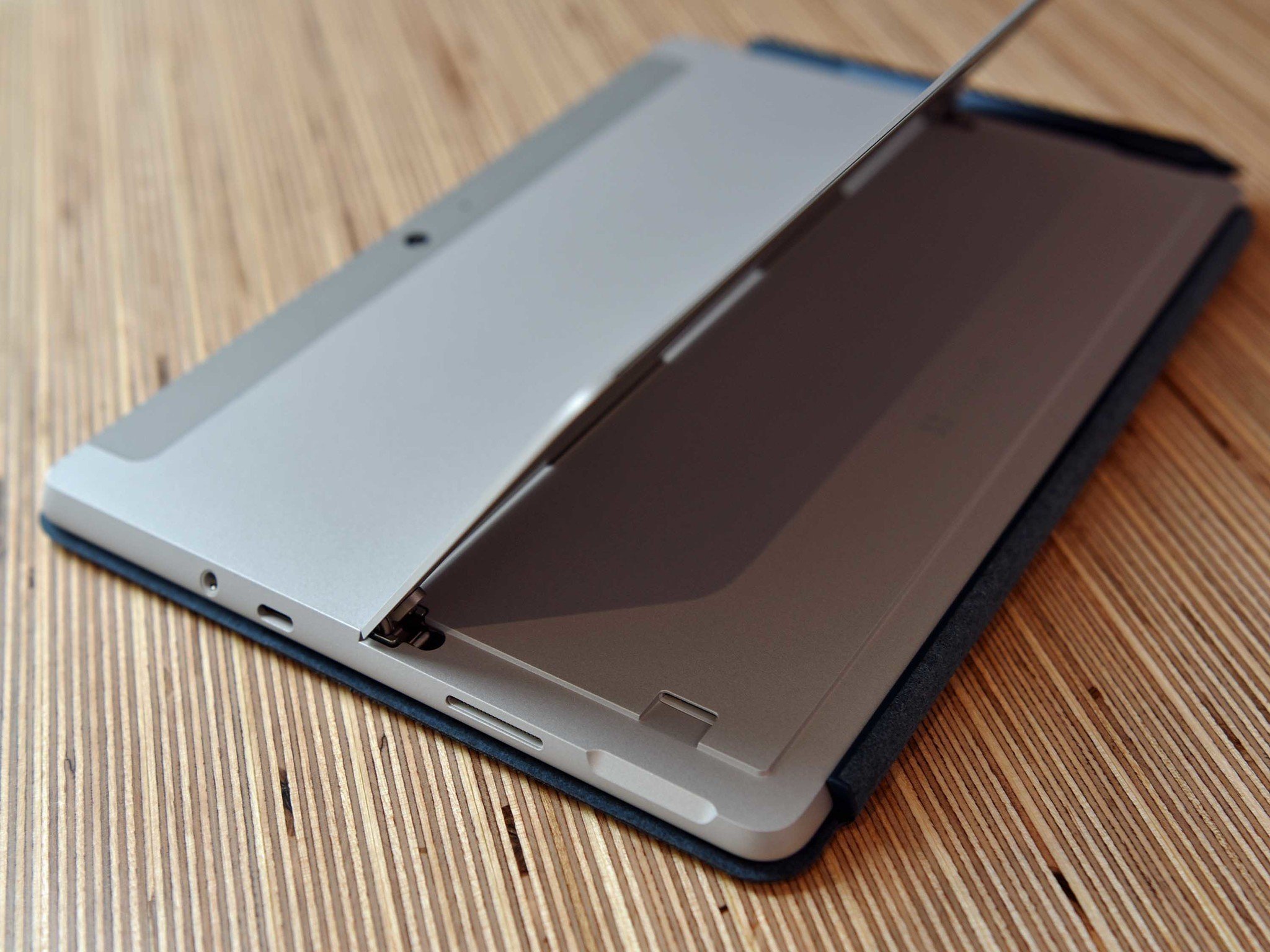
More interesting is the giant trackpad, which is the same size as the one for Surface Pro, making it especially delightful to use despite the more cramped design.
For ports, Microsoft is playing it safe by keeping the Surface Connect port for power and the Surface Display Dock (which works here too), a USB Type-C port instead of Type-A, microSD for storage expansion up to 1TB, and a headphone jack.
That Type-C port is the same style as found with Surface Book 2. That means power delivery, auxiliary charging, display and data support. The only thing that is missing is Thunderbolt 3 capabilities, though I don't see that as a problem for the target market.
The cameras are also the same as Surface Pro, including a front-facing 5MP camera tuned for Skype that also supports Windows Hello facial recognition and an 8MP auto-focus world-facing camera on the rear.
Audio remains like Surface Pro, with dual front-facing speakers carved out of the display for a premium, but muted design.
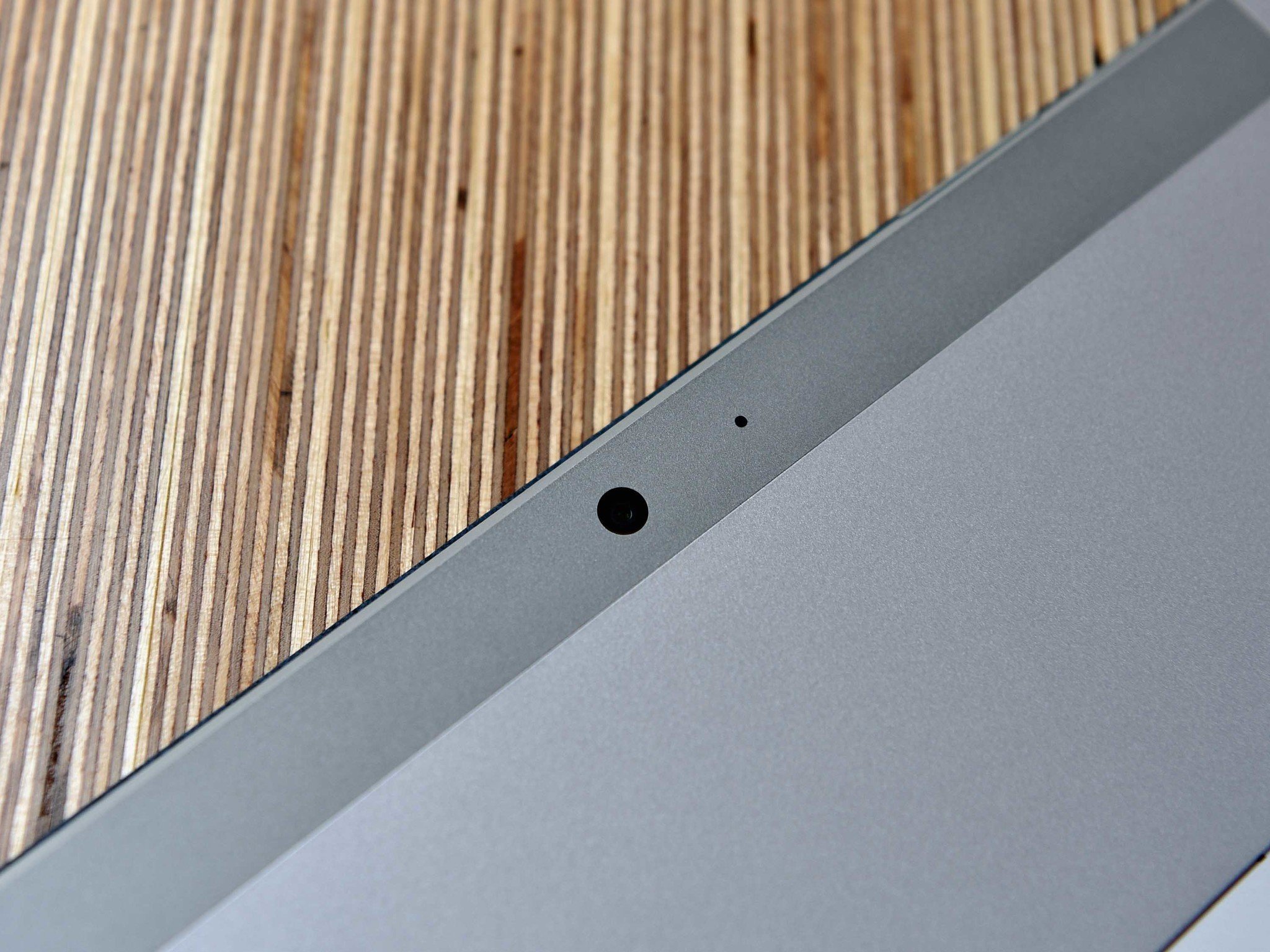
Likewise, the articulating kickstand is the same as Surface Pro's with a smooth 165-degrees of movement and a similar hinge style.
The Surface Go feels very much like a mini-Surface Pro – as it should – but the corners are now even more rounded. The chassis itself is built from the same magnesium components as the more expensive version and has a similarly solid unibody feel.
While the base version of Surface Go comes with 4GB of RAM and 64GB of storage, there will also be an 8GB model with 256GB of storage.
Later this year, consumers can expect a version with an LTE radio as well, mirroring the new Surface Pro with LTE feature set.
Surface Go goes Pentium
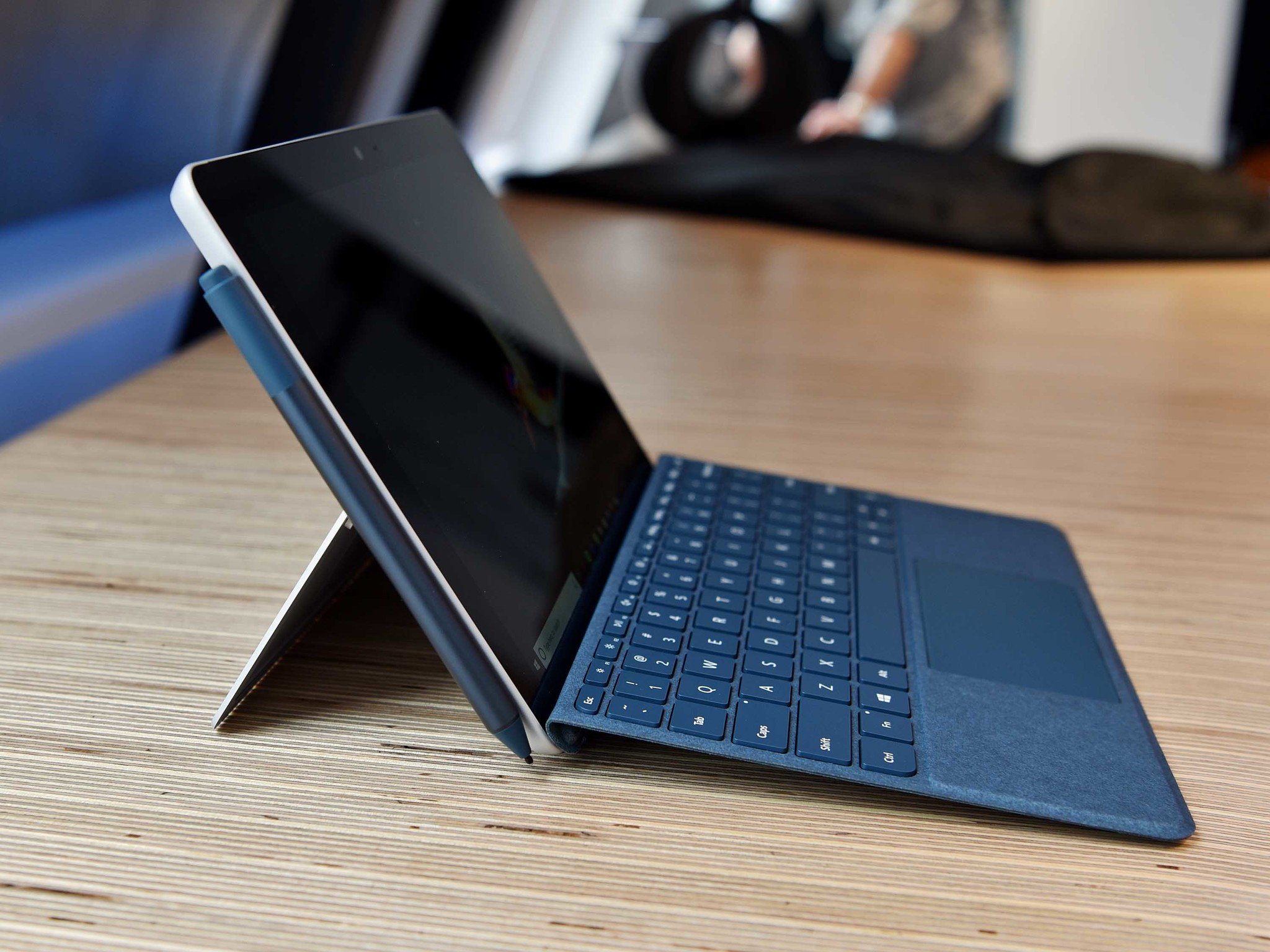
While the Surface 3 had an excellent design, its Intel Atom X7- Z8700 processor left a lot to be desired with slow performance and only mediocre battery life.
Surface Go features a newer and more powerful Intel Pentium Gold 4415Y (1.6GHz) CPU, which Microsoft claims has been "finely tuned" for performance.
When it comes to the Intel line of mobile processors they can be grouped from least to highest performing as Atom < Celeron < Pentium < Core-i. Even within Pentium, there are Silver and Gold variants with the latter being used in Surface Go.


Intel Pentium Gold 4415Y is a 6-watt, Kaby Lake-era, dual-core, four-thread 14nm processor introduced in mid-2017 with a base frequency of 1.6GHz.
The Intel 4415Y also supports 1,866MHz LPDDR3 RAM, hyperthreading, and it has more memory bandwidth as well.
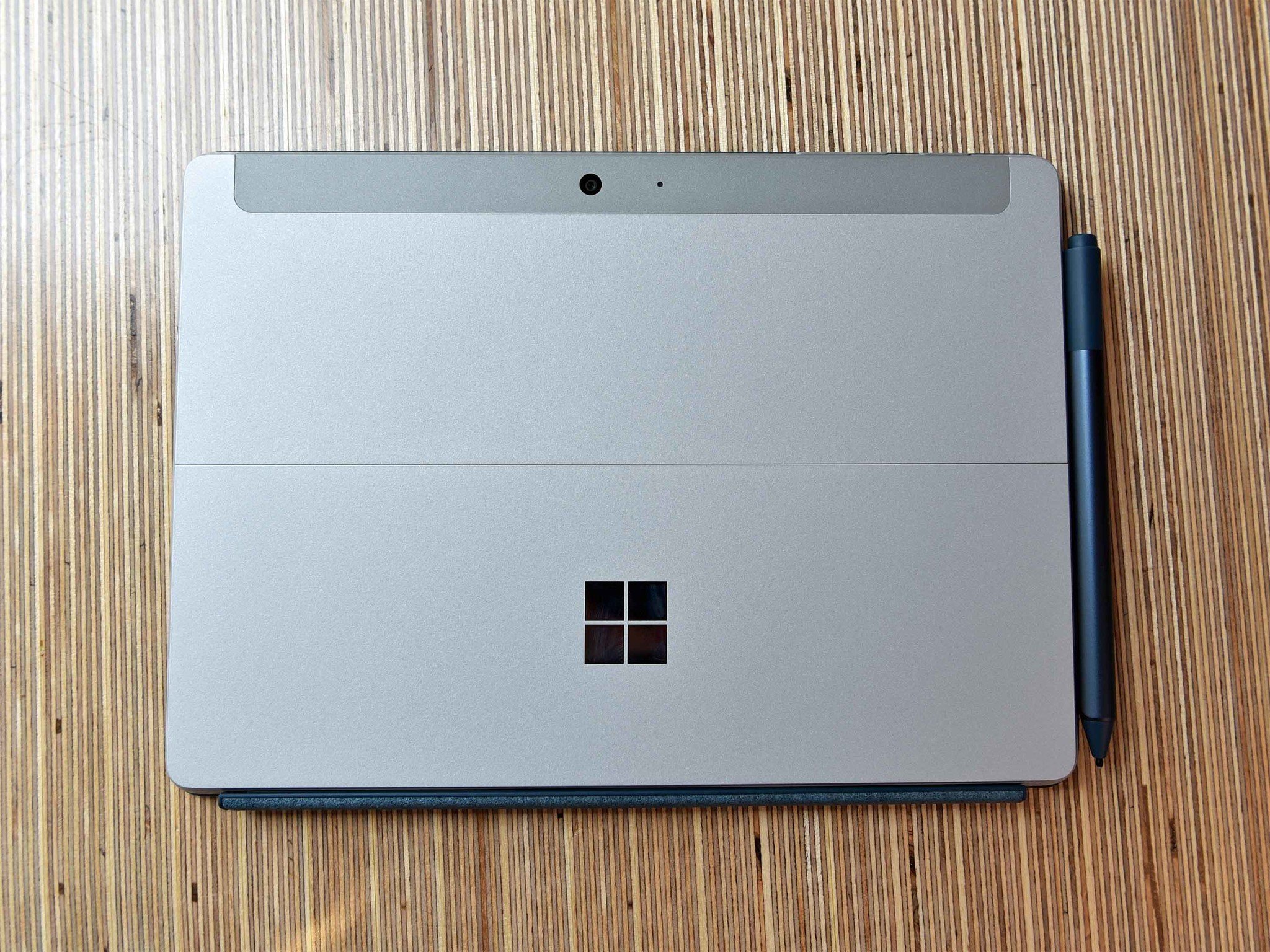

For more real-world expectations Microsoft claims the new Surface Go gets double the processing power and 2.5 times the graphics power of the original Surface 3.
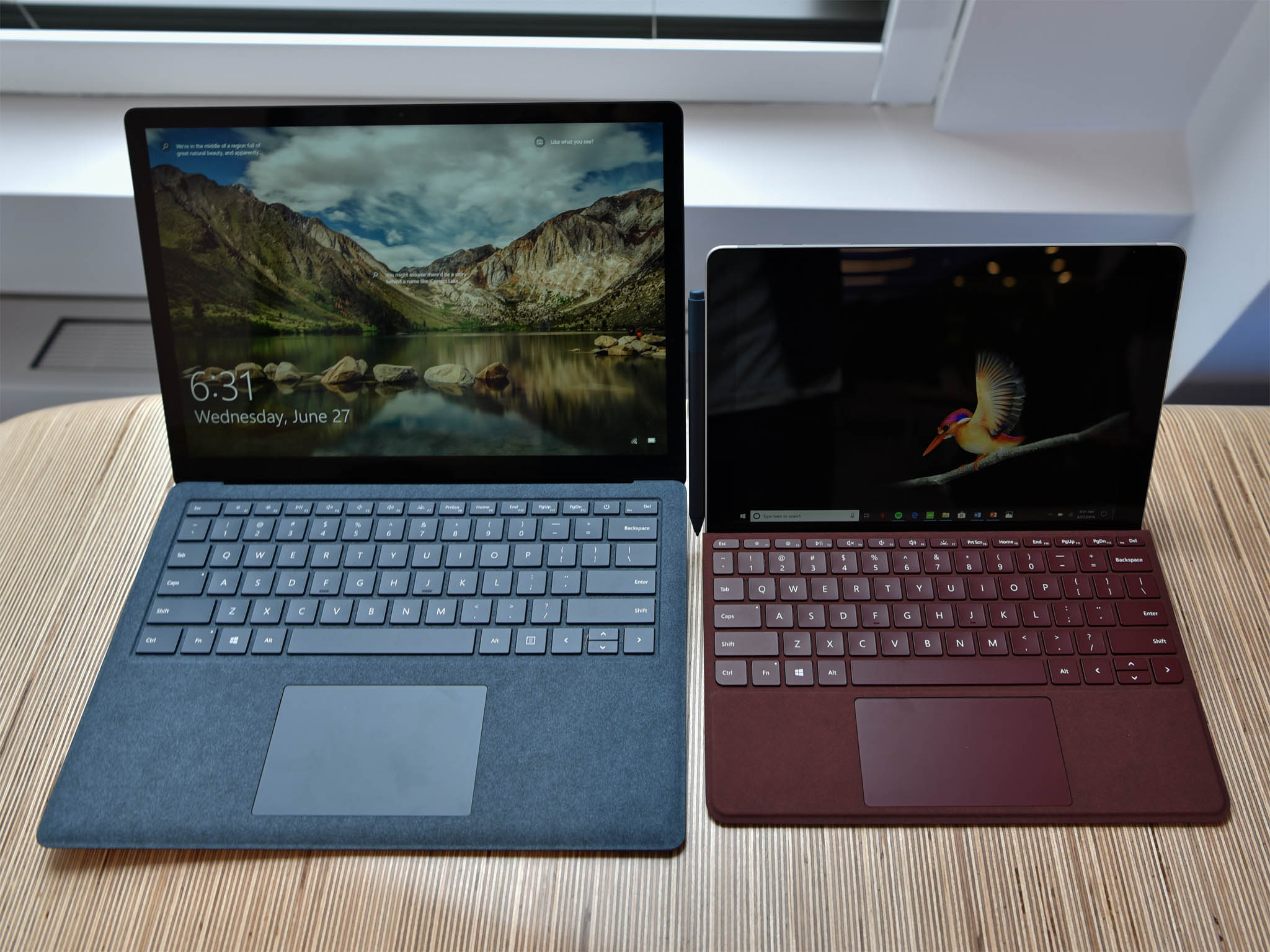
In using the device for a few minutes, the performance felt zippy with even Minecraft running full-screen with a very high framerate – an essential achievement since this device is aimed at a younger demographic.
The system is also wholly fanless and thus passively cooled, with battery life at a claimed 9 hours (which is a bit on the low side). However, with fast-charge support, the Surface Go can get to around an 80 percent charge after 60 minutes plugged in.
Microsoft opted to not use Qualcomm's Snapdragon ARM processor due to the 100 percent compatibility needed for legacy apps in business and some schools.
Surface Go target market

At $399 Microsoft sees Surface Go working in a few markets including the general consumer. More specifically, Surface Go is aimed at:
- Schools and education markets.
- Families and kids.
- Business and first-line workers (FLWs).
- Anyone who wants a small, easy to carry Surface.
For enterprise markets, there will be a slightly different variant priced a bit higher. That difference in price is because it ships with Windows 10 Pro in S-mode versus Windows 10 Home in S-mode for the regular consumer version.
The K-12 education market is also a big target for Microsoft as the company continues to ride recent gains on Google in the U.S.. The Surface Pro is priced too high and is a bit unwieldy for little kids, whereas Surface Go makes more sense financially and from a usability perspective.
| Category | Surface Go | Surface 3 | iPad 9.7 |
|---|---|---|---|
| OS | Windows 10 | Windows 10 | iOS 11 |
| Display | 10-inch 1800x1200 216 ppi | 10.8-inch 1920x1280 214 ppi | 9.7-inch 2048x1536 264 ppi |
| Processor | Intel Pentium | Intel Atom X7 | Apple A10 |
| Storage | 64/256GB | 64/128GB | 32/128GB |
| RAM | 4GB or 8GB | 2GB or 4GB | 2GB |
| LTE | Yes (coming) | Yes | Yes |
| microSD | Yes | Yes | No |
| Front camera | 5MP | 3.5MP | 5MP |
| Rear camera | 8MP AF | 8MP | 12MP |
| Dimensions | 9.6 x 6.9 x 0.33 in (245 x 175 x 8.3 mm) | 10.52 x 7.36 x 0.34 in (267 x 187 x 8.7 mm) | 9.4 x 6.6 x 0.29 in (240 x 170 x 7.5 mm) |
| Weight | 1.15 lbs (522 g) | 1.37 lbs (622 g) | 1.03 lbs (469 g) |
| Wi-Fi | Yes | Yes | Yes |
| Bluetooth | 4.1 | 4.0 | 4.2 |
| Speakers | Dual | Dual | Dual |
| Ports | USB-C 3.1, 3.5mm headset, Surface Connect | USB-A 3.0, Mini DP, micro-USB, 3.5mm headset | Lightning port, 3.5mm headset |
| Pen | Yes ($99 extra) | Yes ($59 extra) | Yes ($99 extra) |
| Keyboard | Yes ($99-129 extra) | Yes ($129 extra) | Yes ($99 extra) |
| Price | from $399 | from $499 (orig.) | from $329 |
At $399, Surface Go is not as inexpensive as Apple's 9.7-inch iPad, which starts at $329 (32GB). But with double the internal storage, microSD expansion, Windows Hello authentication, a USB Type-C port, and being a real PC, the Surface Go has some advantages of its own.
New Surface Go keyboard and accessories
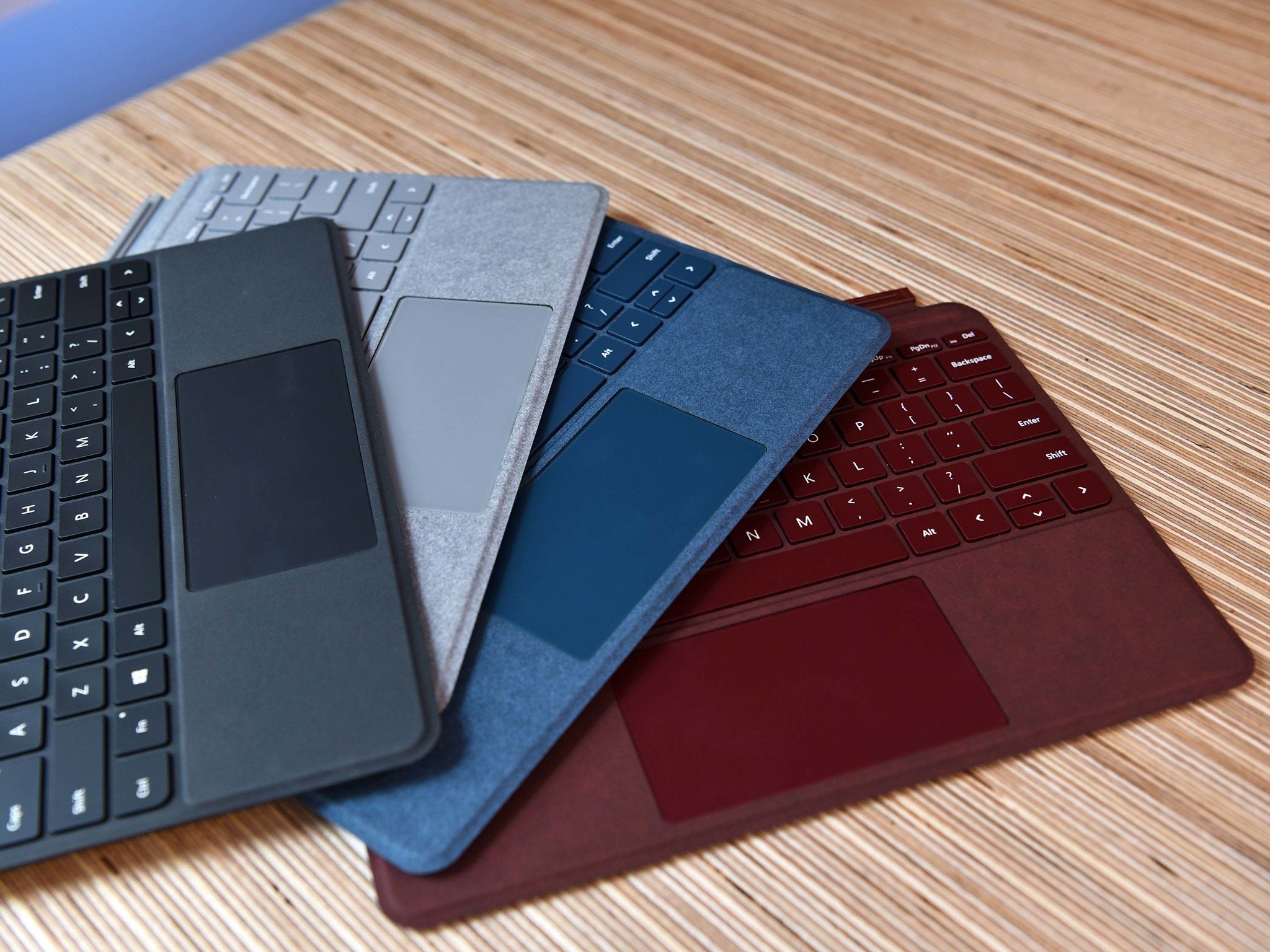
Like Surfaces before it, the Go does not come with a keyboard included at the base price. If you want one, the basic black one will be $99, or you can opt for one of three Alcantara colors (gray, cobalt, or burgundy) at $129.
The new Surface Go keyboard features a massive Precision touchpad, backlit keyboard, and a newly designed connector to keep the design slim and small the Surface Go keyboard appears to continue Microsoft's prowess in this field.
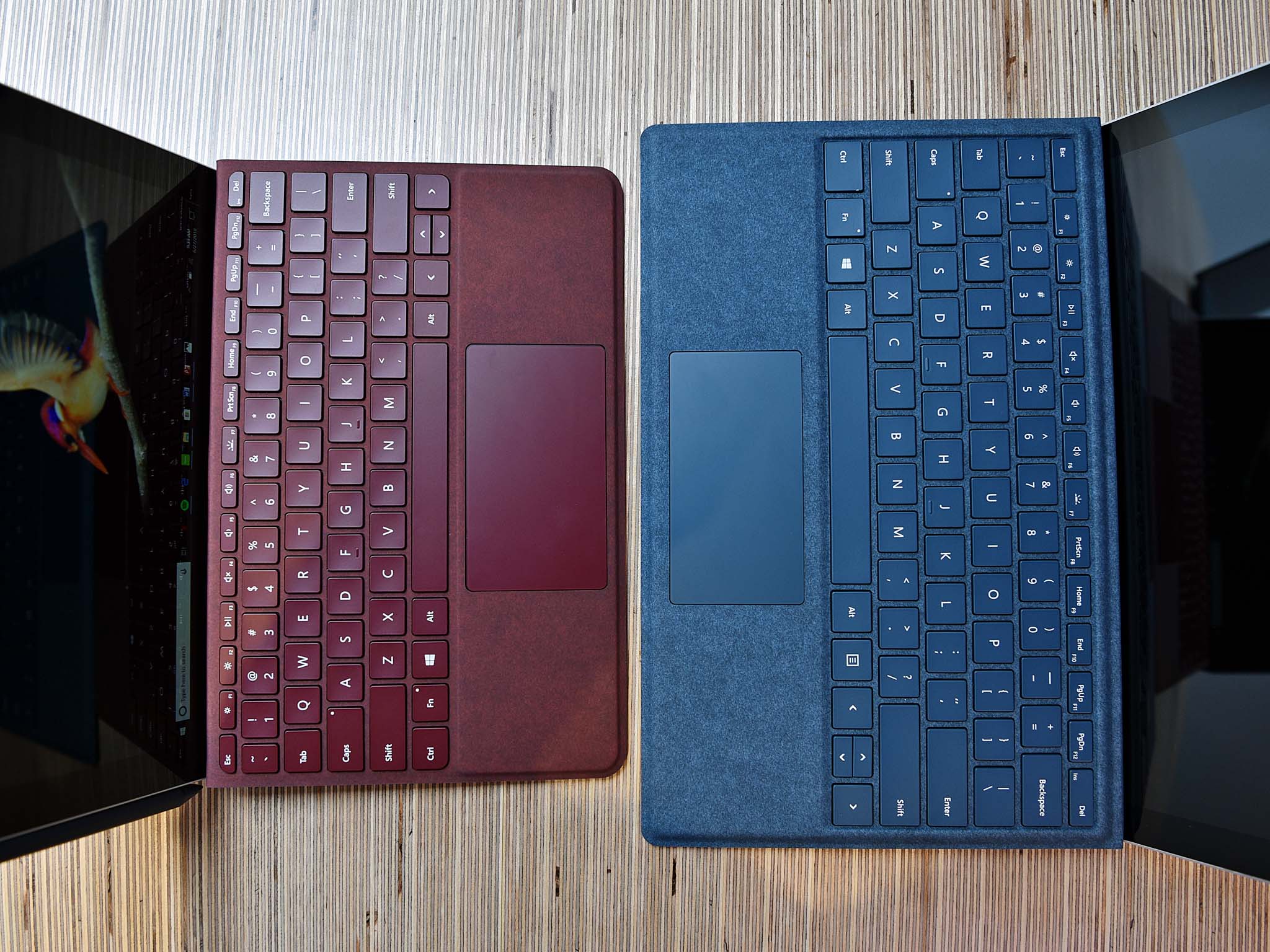
So if you want a keyboard with your Surface Go, it's going to bring the cost to at least $500. A similar iPad 9.7-inch with a Logitech Slim Folio Case with Integrated Bluetooth Keyboard is a bit cheaper at $460.
Likewise, the Surface Pen works as expected with Surface Go and that too is an extra $99 – unless you opt for one of the many lower-priced Surface Pen alternatives.
Microsoft is also updating its favorite Designer Bluetooth Mouse series with a Surface spin, including colors to match those new keyboards.

Microsoft also noted that many third-party accessory manufacturers are already hard at work making rugged accessories like Surface Go cases and shells for schools and business looking for extra protection or pen lanyards to prevent accidental loss.
Available in 35 markets by October
Microsoft is taking pre-orders for the Surface Go starting July 10 in 25 countries, including:
- US
- Canada
- Australia
- New Zealand
- Hong Kong
- UK
- Ireland
- France
- Germany
- Austria
- Belgium
- Luxembourg
- Netherlands
- Switzerland
- Denmark
- Finland
- Norway
- Sweden
- Poland
- Taiwan
- Italy
- Portugal
- Spain
- Malaysia
- Thailand
Surface Go will be available for pre-order in Japan beginning July 11, in Singapore and Korea on August 2, and in China on August 8.
Later on September 12th, Surface Go will be available for pre-order in additional the Middle East:
- Qatar
- Saudi Arabia
- UAE
- Oman
- Kuwait
- Bahrain
Finally, even India gets in on the action starting October 2.
Surface Go first impressions and analysis

Our full review for Surface Go will be available later when this latest Microsoft creation goes on sale in early August. For now, here are some initial thoughts:
- Surface Go is a good name that suggests being 'fun' for once.
- It feels just like a mini Surface Pro with excellent quality.
- The kickstand, keyboard, cameras, and display look excellent.
- At $100 cheaper than Surface 3, the Surface Go is priced appropriately.
- Aiming for schools, kids (families), and small businesses is a great idea.
- The keyboard is a bit cramped to type on but still enjoyable.
- Performance feels much better than Surface 3.
Of course, more time will be needed for final evaluation, but Microsoft seems to be addressing many of the lingering complaints of 2015's Surface 3. It's unclear what took the company so long to bring this to market, but the timing seems right for schools, and it should let Microsoft ramp up production for the holiday season in more markets versus a later announcement in the fall.
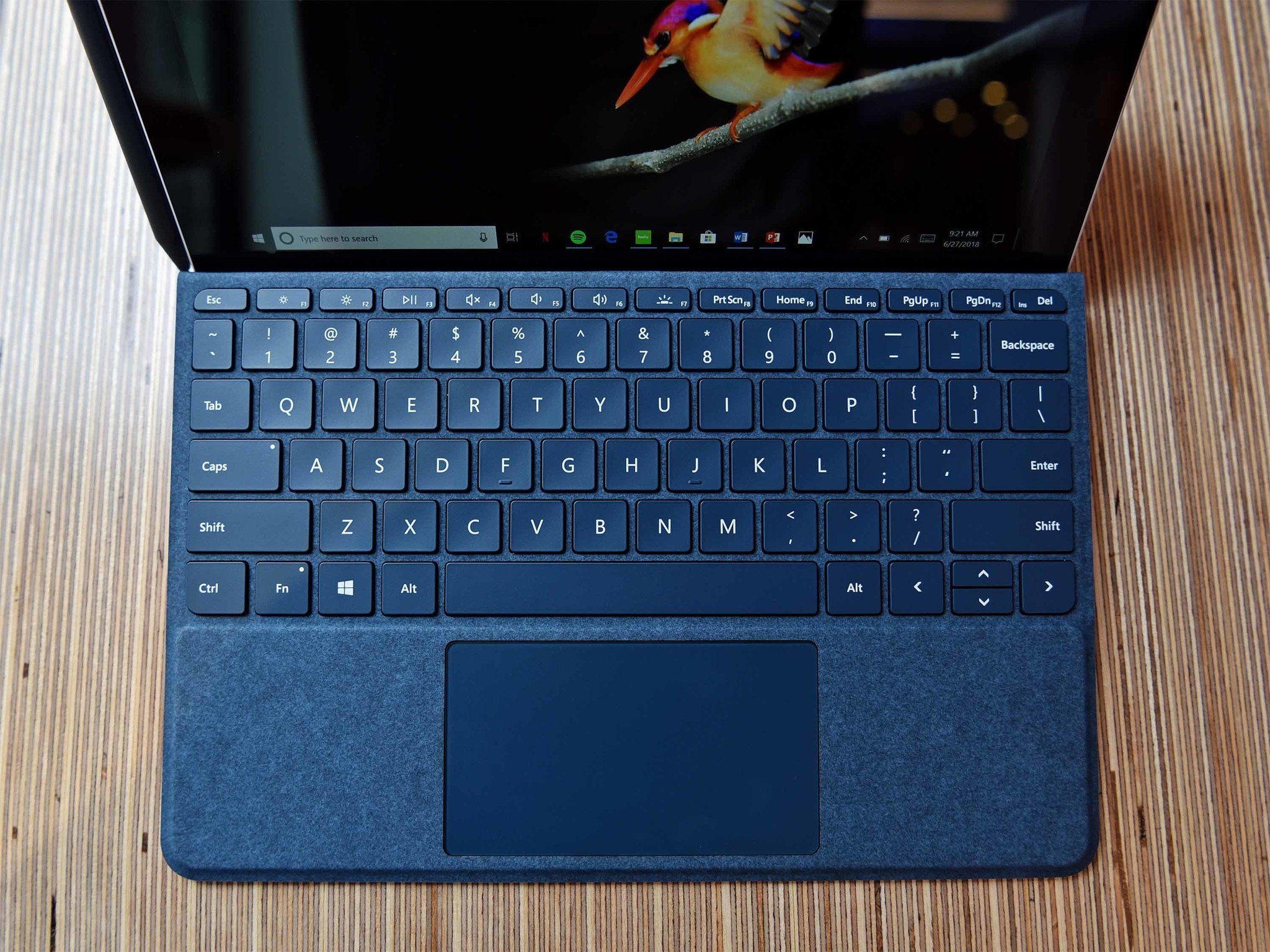
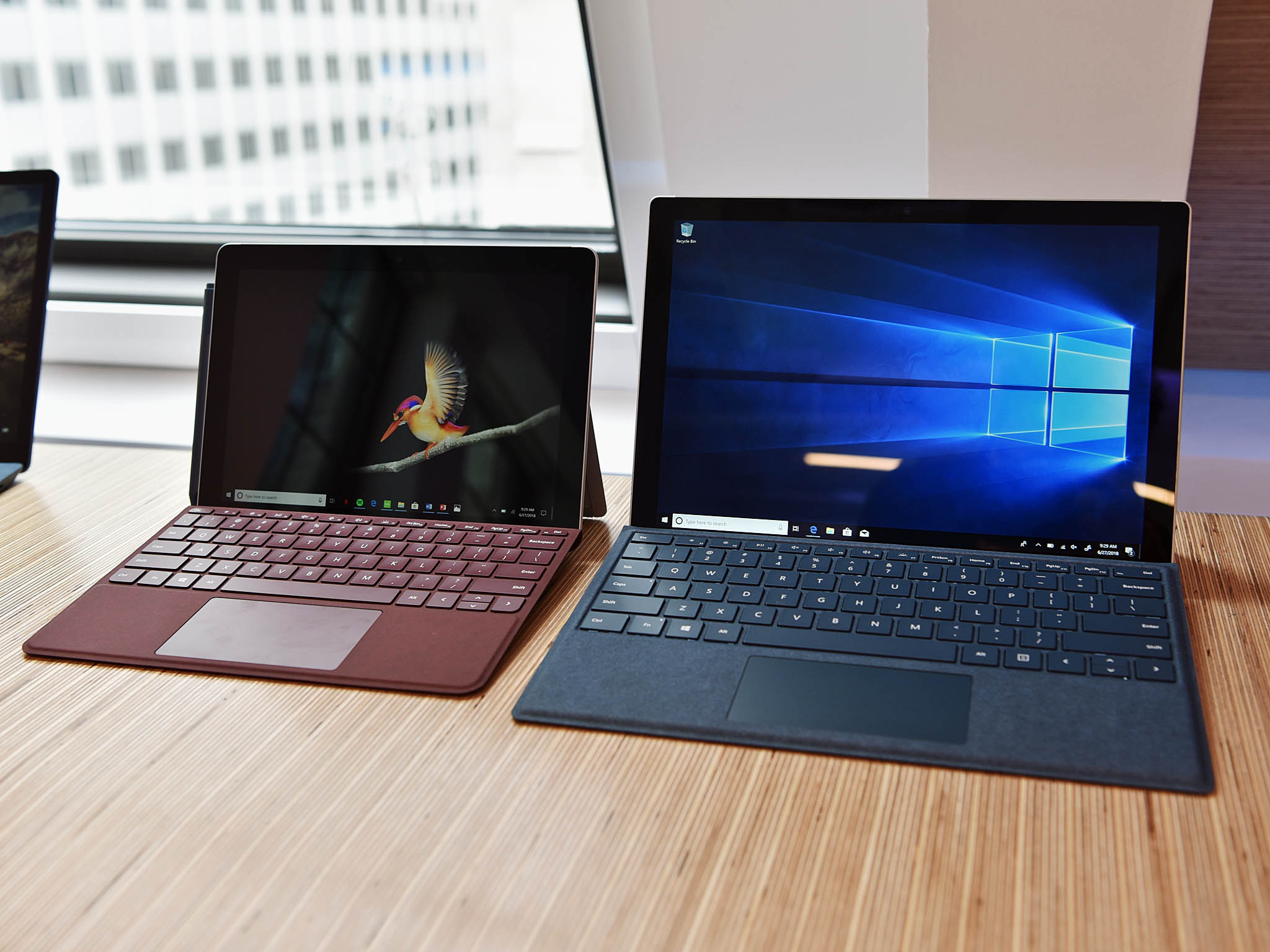
While I would have personally preferred a Surface Go running Windows 10 on ARM the timing is just off. Qualcomm's Snapdragon 835 is soon being supplanted by the more powerful Snapdragon 850, but that launch won't be until the end of 2018 (expected), possibly five months after Surface Go hits store shelves. Moreover, the Surface team is very conservative with its products, and Intel Pentium is a safe-bet for schools and businesses who are not yet ready for a pure Microsoft Store app world.
Parity in pricing with Apple's iPad 9.7 would be ideal, but the cost difference could be justified with the Surface Go's kickstand, being a "real" PC, microSD expansion, double the internal storage, and standardized USB Type-C port.
Finally, I love the name. Surface Go is a clever spin of Surface Pro, and it suggests a fun, nimble device for regular consumers who need light computing and inking experience. It'll be interesting to see just how well it sells and if it resonates with regular folks.
Stay tuned for further coverage of Surface Go, availability, review, comparison to the iPad 9.7, and accessories in the coming weeks and months.

Daniel Rubino is the Editor-in-chief of Windows Central. He is also the head reviewer, podcast co-host, and analyst. He has been covering Microsoft since 2007 when this site was called WMExperts (and later Windows Phone Central). His interests include Windows, laptops, next-gen computing, and wearable tech. He has reviewed laptops for over 10 years and is particularly fond of 2-in-1 convertibles, Arm64 processors, new form factors, and thin-and-light PCs. Before all this tech stuff, he worked on a Ph.D. in linguistics, performed polysomnographs in NYC, and was a motion-picture operator for 17 years.

